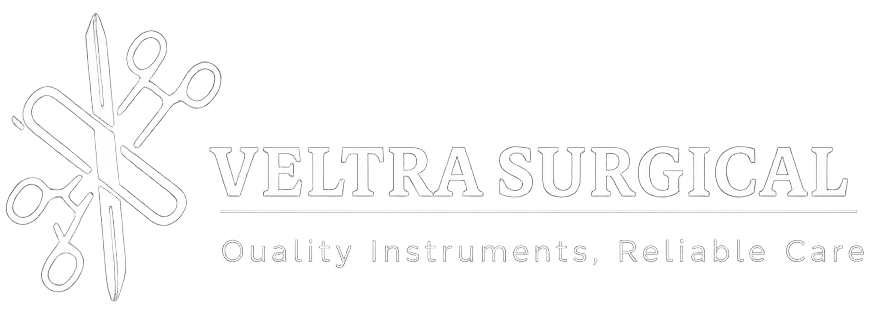Inside the World of Ophthalmic Surgical Consumables: Classifications, Global Leaders, and Emerging Trends
Introduction
In the realm of modern eye care, ophthalmic surgical consumables play a crucial role in ensuring precision, safety, and successful patient outcomes. From cataract surgery to retinal repair, these single-use or limited-use items form the backbone of every ophthalmic procedure. As global demand for eye surgeries continues to rise—driven by aging populations and expanding access to healthcare—the market for ophthalmic consumables is rapidly evolving in both scale and sophistication.
This blog explores the classification of ophthalmic consumables, highlights global market leaders, and examines the trends shaping the future of ophthalmic surgery.
What Are Ophthalmic Surgical Consumables?
Ophthalmic surgical consumables are disposable or semi-disposable materials used during eye surgeries. They ensure sterility, improve precision, and reduce infection risks. Unlike surgical instruments, which are reusable, consumables are designed for single use or limited use to maintain high standards of patient safety.
Classification of Ophthalmic Surgical Consumables
Ophthalmic consumables can be classified into several main categories based on their function and surgical application:
1. Viscoelastic Devices (OVDs)
- Used in cataract and anterior segment surgeries to maintain space in the anterior chamber and protect ocular tissues.
- Examples: Sodium Hyaluronate, Hydroxypropyl Methylcellulose (HPMC) gels.
- Popular Brands: Healon (Johnson & Johnson), OcuCoat (Bausch + Lomb), and Amvisc (Anika Therapeutics).
2. Ophthalmic Surgical Sutures
- Fine, biocompatible threads used to close incisions in delicate ocular tissues.
- Available in absorbable (e.g., PGA, Vicryl) and non-absorbable (e.g., silk, nylon, prolene) materials.
- Leading Brands: Ethicon (Johnson & Johnson), Alcon, and SMI (Sutures Manufacturing Industry, Belgium).
3. Intraocular Lenses (IOLs)
- Artificial lenses implanted to replace the eye’s natural lens after cataract extraction.
- Classified into:
- Monofocal IOLs – Fixed focus vision.
- Multifocal IOLs – Multiple focus points for near and far vision.
- Toric IOLs – Correct astigmatism.
- Preloaded IOLs – Sterile, ready-to-use systems for reduced contamination risk.
- Market Leaders: Alcon (Clareon, AcrySof), Johnson & Johnson Vision (Tecnis), Bausch + Lomb (Akreos), and Kowa (Avansee).
4. Ophthalmic Knives and Blades
- Precision micro-surgical blades used for corneal and scleral incisions.
- Types include crescent knives, MVR knives, slit knives, and lance tips.
- Key Manufacturers: KAI Medical (Japan), Alcon, and Feather Safety Razor Co.
5. Irrigation and Aspiration Consumables
- Include tubing sets, cannulas, and bottles used during phacoemulsification and vitrectomy procedures.
- Designed for sterile, disposable use.
- Leaders: Alcon, DORC (Netherlands), and BVI Medical.
6. Ophthalmic Fluids and Gases
- Used in vitreoretinal surgeries for tamponade or visualization.
- Includes Perfluorocarbon Liquids (PFCLs), Silicone Oils, and Inert Gases (SF6, C2F6, C3F8).
- Popular Brands: Micromed, Alchimia, and Geuder AG.
Global Market Leaders in Ophthalmic Consumables
The ophthalmic consumables market is dominated by a few multinational companies with strong innovation pipelines and trusted product portfolios:
- Alcon (Switzerland/USA) – A leader in cataract and refractive surgery solutions.
- Johnson & Johnson Vision (USA) – Known for high-end IOLs, OVDs, and sutures.
- Bausch + Lomb (USA) – Offers comprehensive ophthalmic consumable solutions.
- Carl Zeiss Meditec (Germany) – Integrates premium consumables with its surgical platforms.
- Kowa (Japan) – Recognized for preloaded IOLs and innovative consumable designs.
- DORC (Netherlands) – A key player in vitreoretinal surgery consumables.
Emerging manufacturers from Sialkot, Pakistan, are also gaining international recognition for providing cost-effective and high-quality ophthalmic consumables, making the region an increasingly important part of the global supply chain.
Market Trends and Future Outlook
The global ophthalmic surgical consumables market is projected to grow steadily due to:
- Rising Cataract Cases: Aging populations and improved access to surgical care.
- Shift Toward Disposable Systems: Increasing infection control awareness.
- Technological Integration: Smart, preloaded, and ergonomic consumables.
- Sustainability Efforts: Eco-friendly packaging and biodegradable materials.
- Regional Expansion: Growth of manufacturers in Asia-Pacific regions, especially Pakistan, India, and China.
As innovation accelerates, the focus is shifting toward minimally invasive, preassembled, and patient-specific consumables — transforming ophthalmic surgery into a more efficient and safer experience.
Conclusion
From viscoelastic gels to intraocular lenses, ophthalmic surgical consumables are vital components driving precision and safety in eye care. With leading global manufacturers innovating continuously and emerging markets like Sialkot, Pakistan, contributing competitively priced, world-class consumables, the future of ophthalmic surgery looks brighter than ever.
Whether you are a healthcare provider, distributor, or ophthalmic specialist, investing in premium-quality surgical consumables ensures enhanced surgical outcomes and long-term patient satisfaction.












